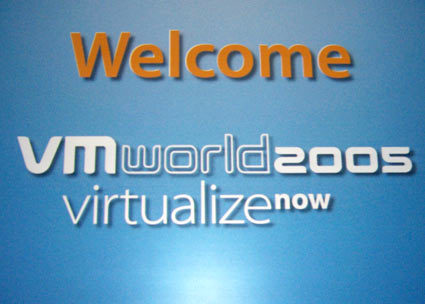Virtual Infrastructure Summit At VMWorld 2005
Will New CPU Technology Impact Our Virtuality?
This past week VMWare hosted the 2005 VMWorld event, at the Mandalay Bay hotel in Las Vegas, Nevada. For those of you who have no prior knowledge of VMWare, the key concept behind it is virtualization of computer hardware. Simply put, this refers to how to run more than one operating system concurrently on one physical machine in isolated instances.
We are sure that most of you already know about this kind of virtualization, and may even have some experience with virtual environments. For the novices, I would recommend a quick look at VMware Virtualization before reading on, since the article will give you background on some advanced terminology concerning virtualization.
Hardware virtualization has been in use for a long time on mainframes, but until recently it has not been practical on most smaller systems, mainly due to performance bottlenecks. During the last 10 years, performance has increased dramatically, and we now have some decent platforms either available or upcoming on which to finally implement virtualization.
There are several virtualization operating systems to choose from:
a) The open source XEN project, which facilitates the virtualization of operating systems that have XEN 'virtual hardware' support. So far we are only aware of a few Linux variants being supported.
b) Microsoft Virtual Server 2005, which is basically virtualization on top of Windows Server 2003. Virtual Server 2005 R2 will be available this fall, enabling features like V-Motion features by using the same cluster technology that is already implemented into Windows Server, among other things.
c) VMWare has products that virtualize on top of Microsoft Windows or Linux with their VMWare Workstation and GSX software. There is also the ESX server, which is a highly specialized Kernel based on a Linux service console that enables better performance by running the Virtual Machines (VMs) 'closer to the hardware' than the products running on top of another operating system. ESX server also has much more advanced features like V-Motion, which can, for example, enable higher uptime on VMs than the hardware it is running on. This is accomplished by moving VMs seamlessly between ESX servers in real time.
Get Tom's Hardware's best news and in-depth reviews, straight to your inbox.
This article will go into detail on ESX and other VMWare products, since at the present time these are the farthest along in their development paths.
Current page: Will New CPU Technology Impact Our Virtuality?
Next Page What Can We Do With Virtualization?